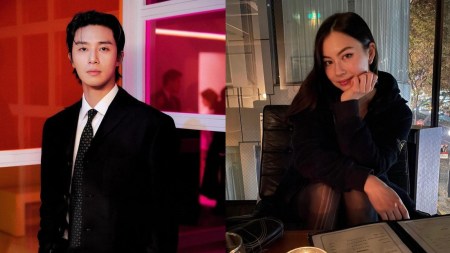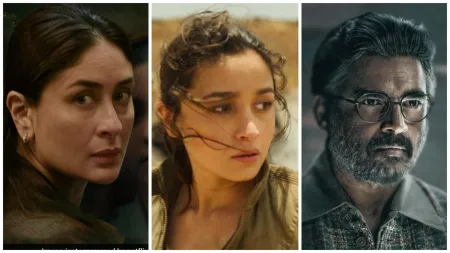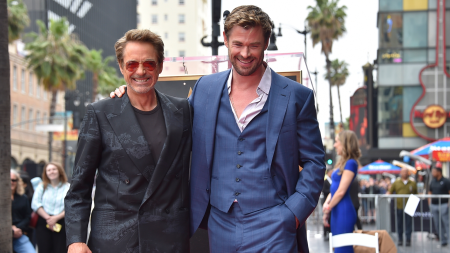Sanjay Leela Bhansali’s Heeramandi has polarised the audience, like many of his previous films. Some feel that in the filmmaker’s work, the male gaze masquerades as women’s aspiration and agency, others applaud him for prioritising women in the Hindi film industry, going against the industry norms where the “hero” is at the heart of every film.
Indian Express’ Paromita Chakrabarti and Pooja Pillai debate Bhansali’s cinema and his feminism. Through their pieces, they offer not this-versus-that, but the best of both sides.

Bhansali’s films have women at their centre, but they are no flag-bearers of feminism
ALSO READ | Sanjay Leela Bhansali focuses on women — he just doesn’t understand them
For Paromita Chakrabarti, a scene in the opening episode of Heeramandi: The Diamond Bazaar sums up Bhansali’s heroines: During a conversation over their ambitions, one of the protagonists, Lajjo, tells her foster sisters Bibbojaan and Alamzeb that the chasm between the dreams and destiny of Heeramandi’s courtesans are too deep to be breached. Bibbojaan, one of the few layered characters in the series, agrees: “Hum sone ke pinjre mein phadphadate hain aur khwab azadi ke dekhte hain (We live in gilded cages and dream of freedom)”.
Bhansali’s latest OTT offering traces the lives of Lahore’s tawaifs in pre-Independence India. But you could take a sample of any of his movies — Hum Dil De Chuke Sanam (1999), Devdas (2002), Saawariya (2007), Goliyon Ki Raasleela Ram-Leela (2013), Bajirao Mastani (2015) or Padmaavat (2018) — and the impression that you are left with is of women who live in gilded cages, imagining freedom to look a certain way when it is only, after all, male gaze masquerading as female aspiration and agency.
Consider this: In Hum Dil De Chuke Sanam, it is not Aishwarya Rai’s Nandini who gets to make the choice of returning to Sameer. That decision is a largesse bestowed on her by her husband, Vanraj, placing a moral obligation on her. In Bajirao Mastani, Kashi, played by Priyanka Chopra, has to cope with the consequences of decisions men take for her — she has no say in Bajirao’s decision to marry Mastani, her refusal of conjugal rights to him is a result of his betrayal. In Saawariya, Rani Mukerji’s Gulab is a rebound option Raj (Ranbir Kapoor) turns to when the woman he is pursuing, Sakina (Sonam Kapoor), rejects him. In each of these movies, Bhansali’s imagination presupposes beauty and grandeur but the individuality he imbues his women with is inadequate, a prop for the men to play benefactors to women or for women to get into the skin of men.
Bhansali clings to his outdated lens. His women are all objects of beauty and desire, operating in settings whose scale can only belong to the realm of the make-believe. Consequently, the women are removed from the real business of life by their distance from it. They are reduced to morality tropes — remove the names and Mastani could just as easily be Valour, Padmavati, Honour, Leela, Rebellion, and Sakina, Innocence.
 A more problematic issue with Bhansali’s women is their interpretation of emancipation
A more problematic issue with Bhansali’s women is their interpretation of emancipation
A more problematic issue with Bhansali’s women is their interpretation of emancipation. Parochial wisdom would have us believe that it is easier for women to be best friends with diamonds than with each other; that there will always be a frisson of jealousy between two women, be it mothers-in-laws and daughters-in-law or female colleagues at the workplace.
Our films, even those that profess to champion women, like those made by Bhansali, internalise the language of misogyny, in which women must fight each other for love, money, fame or control. Worse still, that they must speak and operate in the same patriarchal currency that framed the narratives of their lives. It might take shrewd business sense to run a business in Heeramandi but does Mallikajaan or Rehana need to be the one-tone ruthless huzoor to keep control?
On centring women, Sanjay Leela Bhansali is ahead of mainstream Bollywood
ALSO READ | What Sanjay Leela Bhansali’s films have that other Bollywood films don’t
Pooja Pillai writes that Sanjay Leela Bhansali’s women, always gorgeously presented and shot in the most flattering of frames, don’t just happen to be beautiful, they wear their beauty with purpose, like an armour to deflect the slings and arrows of a cruel world. In his new series Heeramandi: The Diamond Bazaar, like in all his films, Bhansali has lavished attention on the appearance of his women — their gorgeous brocades, the curls that cascade down their backs and how they seem to never walk, but glide. But the point of such extravagant beauty, as Bhansali well understands, is to present a stark contrast to the ugliness and pain that lies beneath. The women of Heeramandi lie, scheme, steal and betray each other — they also nurse broken hearts and frustrated ambitions, they crave independence and respect.
For years now, Bhansali has been accused of exploiting the pain and heartbreak of women through aestheticisation — tears don’t ruin make-up, hair is artfully dishevelled, while clothes stay unrumpled. From a young Ganga in Gangubai Kathiawadi to Kashibai in Bajirao Mastani, they suffer their humiliations with dignity. Even in their moments of breakdown, Bhansali frames his suffering women like works of art — the improbably long pallu flying behind Paro, in slow motion, as she runs to be with a dying Devdas, the light reflecting on Nandini’s face as she unsuccessfully attempts suicide by a pool of water (Hum Dil De Chuke Sanam).
 Alia Bhatt played the lead role in Gangubai Kathiawadi.
Alia Bhatt played the lead role in Gangubai Kathiawadi.
All of this might seem to verge on the exploitative, if not for the fact that Bhansali’s women don’t merely suffer. Annie (Khamoshi), Nandini, Mastani and Gangubai push against the limits that the men in their worlds place upon them. Even when they’re not at the front and centre, like Anupama in Hum Dil De Chuke Sanam, they are the ones who unleash the forces that bring in tension and drive the plot forward.
This kind of narrative space has rarely been afforded to women by any mainstream Hindi filmmaker (except Vishal Bhardwaj and perhaps Yash Chopra, whose heroines too are self-willed, dynamic personalities). Bhansali’s “feminised” films, where women’s egos, desires and traumas are prioritised, stand in sharp contrast to the male star-driven vehicles that still form the overwhelming majority of films coming out of Bollywood. Here, a Bhool Bhulaiya 2, despite the pivotal role played by Tabu, is known as a “Kartik Aaryan film”, and an Animal, deeply invested in its man-child protagonist’s growth, becomes a hit despite misogynistic overtones.
ALSO READ | More to Yash Chopra than romance in the Alps, chiffon sarees: He gave India the ‘angry young man’, films on religious amity
And the difference between Bhansali and his peers in this regard is evident from something as simple as the paisa vasool moment of the “star entry”: Consider the dramatic “intro” for Sonakshi Sinha’s Fareedan in Heeramandi, the beautifully shot song ‘Man Mohini’ from Hum Dil De Chuke Sanam which establishes Nandini’s headstrong, irrepressible personality and the hunting scene in Padmaavat which shows that the princess of Singhal, played by Deepika Padukone, is a combination of beauty, brains and courage.
One of Bollywood’s axioms is that “heroine-centric” films don’t make financial sense and that only a “hero” can guarantee respectable box office returns. This has been disproved many times, not least by Bhansali whose films, even when a major male star is in one of the lead roles, are driven by women. Indeed, Gangubai Kathiawadi was powered entirely by Alia Bhatt’s performance, with no male star of a similar stature required to make it a hit, and Heeramandi too is headlined by women. If the first step towards empowerment is representation, then Bhansali has done more — with a more consistent record — in this regard than his industry colleagues.
Click for more updates and latest Bollywood news along with Entertainment updates. Also get latest news and top headlines from India and around the world at The Indian Express.
Disclaimer: The copyright of this article belongs to the original author. Reposting this article is solely for the purpose of information dissemination and does not constitute any investment advice. If there is any infringement, please contact us immediately. We will make corrections or deletions as necessary. Thank you.







